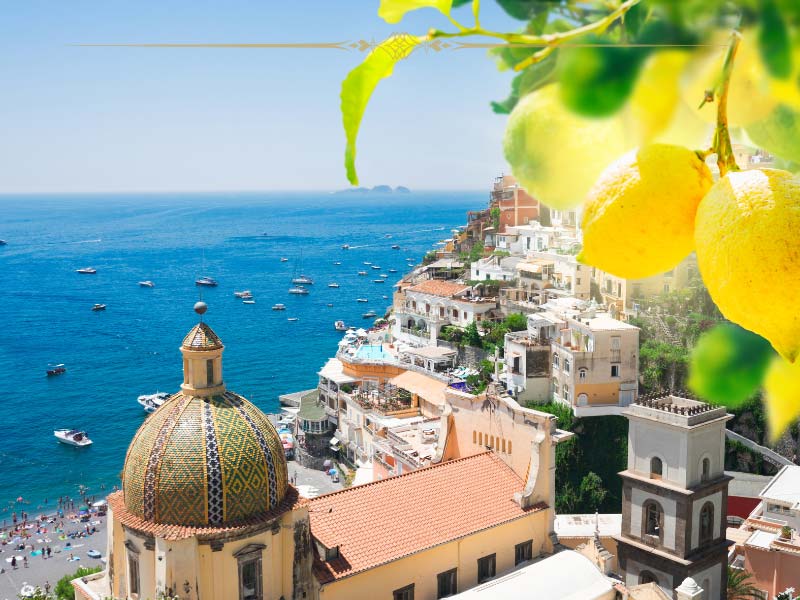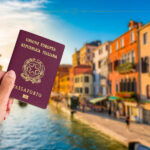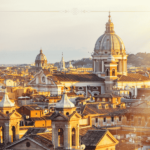Planning a trip to Italy? Your budget might be missing some expensive surprises. Every year, millions of travelers visit Italy thinking they know what their vacation will cost. But Italy has many hidden fees that can add hundreds of euros to your trip without warning.
These extra costs aren’t accidents. They’re part of how Italy’s tourism system works. Local people know about them, but tourists don’t. From surprise restaurant charges to bathroom fees, these hidden costs can turn your dream Italian vacation into a financial nightmare.

Paying to Use the Bathroom
In Italy, using public bathrooms costs money. Train stations, tourist areas, and public places charge between 50 cents and 2 euros just to use the toilet. This happens everywhere, whether the bathroom is clean or dirty.
Some places have people collecting money at the door. Others have machines that only work with coins. Big train stations like Rome’s main station and Milan’s central station make lots of money this way.
Tourist spots charge the most. Near famous places like the Colosseum in Rome, St. Mark’s Square in Venice, or the big church in Florence, bathroom fees can cost 2 euros every time you go. These places know tourists have no choice and will pay whatever they charge.
The strange part is that in regular neighborhoods where tourists don’t go, small bars and cafes will let you use their bathroom if you buy a coffee. But in tourist areas, many places won’t let you use their bathroom at all unless you buy expensive food.
Tourist Tax Surprise at Hotels
Italian cities charge extra taxes just for being a tourist. These taxes can cost up to 25 euros per night if you stay in expensive hotels. Some cities are raising these taxes even more. Rome is charging extra fees because of special events in 2025.
Hotels cannot include these taxes when you book online. The city makes hotels collect this money separately. This means you pay your hotel booking website for your room, but then you have to pay the hotel directly for the city tax. The city requires this payment in cash only.
Different types of hotels pay different amounts. Fancy hotels pay the most. Hostels and camping sites pay less. But even cheap places have to charge these taxes, so you can’t avoid them by staying somewhere less expensive.
Every city has different rules. Some cities only charge the tax for a few nights. Others charge for your whole stay. Rome charges for many nights, while Venice has extra fees for people who just visit for the day.
Water Costs a Fortune at Restaurants
Italian restaurants will not give you tap water. They will only sell you bottled water. This happens at every restaurant, from fancy places to simple pizza shops.
Restaurants charge 3 to 6 euros for water bottles that cost less than 1 euro in grocery stores. This makes restaurants a lot of money, especially in tourist areas where people drink lots of water during long meals.
Summer makes this worse because hot weather makes people thirsty. A family with two kids can easily spend 15 to 20 euros just on water for one meal. Over a week-long vacation, water costs can add hundreds of euros to your food budget.
Some restaurants might give you tap water if you ask in a very specific way, but most will refuse no matter what you say. You never know which restaurants will help and which won’t, making it impossible to plan your budget.
Coffee Costs Double if You Sit Down
Italian cafes charge much more if you sit at a table instead of standing at the bar. The same coffee that costs 1.50 euros standing up can cost 3 or 4 euros sitting down. This price difference can be twice as much.
This happens because Italians traditionally drink coffee quickly while standing up. Sitting at tables is considered fancy service that costs more money. But most tourists don’t know this and expect the same price everywhere.
This higher price applies to everything, not just coffee. Pastries, sandwiches, and alcoholic drinks all cost more at tables. Tourist areas charge the highest table prices because they know visitors want to sit down and don’t know about the price difference.
Some cafes show both prices clearly, but others don’t tell you until you get your bill. This makes it hard to know how much you’ll spend and creates bad experiences for tourists.
Automatic Bread Charge at Every Restaurant
Every restaurant in Italy adds an automatic charge to your bill called “coperto.” This fee costs 2 to 5 euros per person and appears on every single restaurant bill. Tourist areas charge even more, sometimes 7 or 8 euros per person.
This charge is not a tip. It’s a separate fee that restaurants collect no matter what. You cannot refuse to pay it, and you cannot negotiate it away. It’s just part of eating at restaurants in Italy.
The fee is supposed to cover the bread they bring to your table, but you have to pay it even if you don’t eat the bread. Even if you tell them you don’t want bread, you still pay the full charge. The fee really covers the cost of setting up your table and providing service.
Restaurants near famous tourist spots like the Trevi Fountain in Rome or the Rialto Bridge in Venice charge the highest coperto fees. They know tourists have to eat somewhere and will pay whatever they charge.
Transportation Tricks and Traps
Italy’s trains and buses have many hidden costs beyond the basic ticket price. Some trains charge extra for luggage. Fast trains require seat reservations that cost extra money. If you don’t stamp your ticket correctly, you can get huge fines.
Different regions have different rules for validating tickets, which confuses tourists. If you forget to stamp your ticket or do it wrong, you can get fined much more than your ticket cost. Tourist areas have more ticket inspectors who specifically look for confused foreign visitors.
Getting to and from airports costs much more than expected. Airport trains and buses add extra fees, luggage charges, and premium prices that make simple transportation very expensive.
Taxis in tourist areas often don’t use their meters properly. Drivers take longer routes or add extra charges that tourists don’t understand. A normal taxi ride can cost several times more than it should when drivers take advantage of tourists who don’t know the city.
Shopping Surprise Fees
Tourist shopping areas add many hidden charges to purchases. Credit card fees, international purchase charges, and tax-free shopping service fees all add extra costs to whatever you buy.
Souvenir shops near famous attractions often add handling fees to purchases, especially if you need shipping or special packaging. These extra charges can cost more than the actual items you’re buying.
Market vendors in tourist areas change their prices based on how much money they think you have and how well you can bargain. The same item can cost completely different amounts depending on what the seller thinks about you.
Money exchange services in tourist zones charge huge fees that add 3 to 5 percent to every purchase. Credit card processing fees add even more cost, making expensive purchases much more expensive.
Museum and Attraction Add-Ons
Museums and famous attractions charge much more than just the basic entry price. Audio guides, special exhibitions, and premium viewing areas all cost extra money that can double or triple your entrance fee.
Booking fees for advance tickets add significant costs to popular attractions, especially during busy seasons when you need to book ahead. These booking fees can cost almost as much as the actual tickets.
Group tours, private guides, and skip-the-line passes turn basic sightseeing into expensive premium experiences. Tourist demand for better experiences means attractions keep creating new fees that make visiting cultural sites much more expensive.
Photography fees, special access charges, and premium viewing areas create even more costs. Popular places like the Vatican Museums and Uffizi Gallery in Florence have so many extra charges that your total cost can be two or three times the basic entrance price.
Hotel Surprise Charges
Hotels charge for many things beyond the room price. Air conditioning fees, internet charges, safe usage fees, and resort fees all appear when you check in or check out. These weren’t mentioned when you booked your room.
Cleaning fees, especially in vacation rentals, can cost a large portion of your total accommodation bill. These charges apply no matter how long you stay or how clean you leave the place, creating fixed costs that hurt shorter stays or budget travelers most.
Parking fees in Italian cities are enormous hidden costs, especially if you rent a car or drive your own vehicle. Hotel parking can cost 20 to 40 euros per night, while public city parking charges premium rates that add up quickly over several days.
Breakfast add-ons, minibar charges, and phone usage fees create small costs that add up throughout your stay. Hotels that focus on tourists charge the most for these extras because they know vacation travelers often pay for convenience without checking prices carefully.
Planning for Hidden Costs
All these hidden costs can add hundreds of euros to your Italian vacation budget. A week-long trip for a family of four can easily cost 300 to 500 euros more than expected just from these surprise charges.
The key to avoiding budget shock is knowing these costs exist before you travel. You can’t eliminate most of these fees, but you can plan for them. Bring extra cash for tourist taxes and bathroom fees. Expect restaurant meals to cost more than menu prices suggest. Plan for transportation surprises and hotel add-ons.
Understanding Italy’s hidden cost system helps you make better spending decisions during your trip. When you know a coffee costs twice as much sitting down, you can choose to stand at the bar. When you know restaurants charge for water, you can drink more at your hotel.
These hidden costs are part of traveling in Italy. They’re not going away, and they’re not optional. But knowing about them ahead of time means they won’t ruin your vacation budget or create unpleasant surprises during your dream Italian adventure.
Italy remains one of the world’s most beautiful travel destinations. The art, food, history, and culture make it worth visiting despite these extra costs. Smart travelers who understand Italy’s hidden fee system can still have amazing vacations while protecting their budgets from unexpected expenses.




